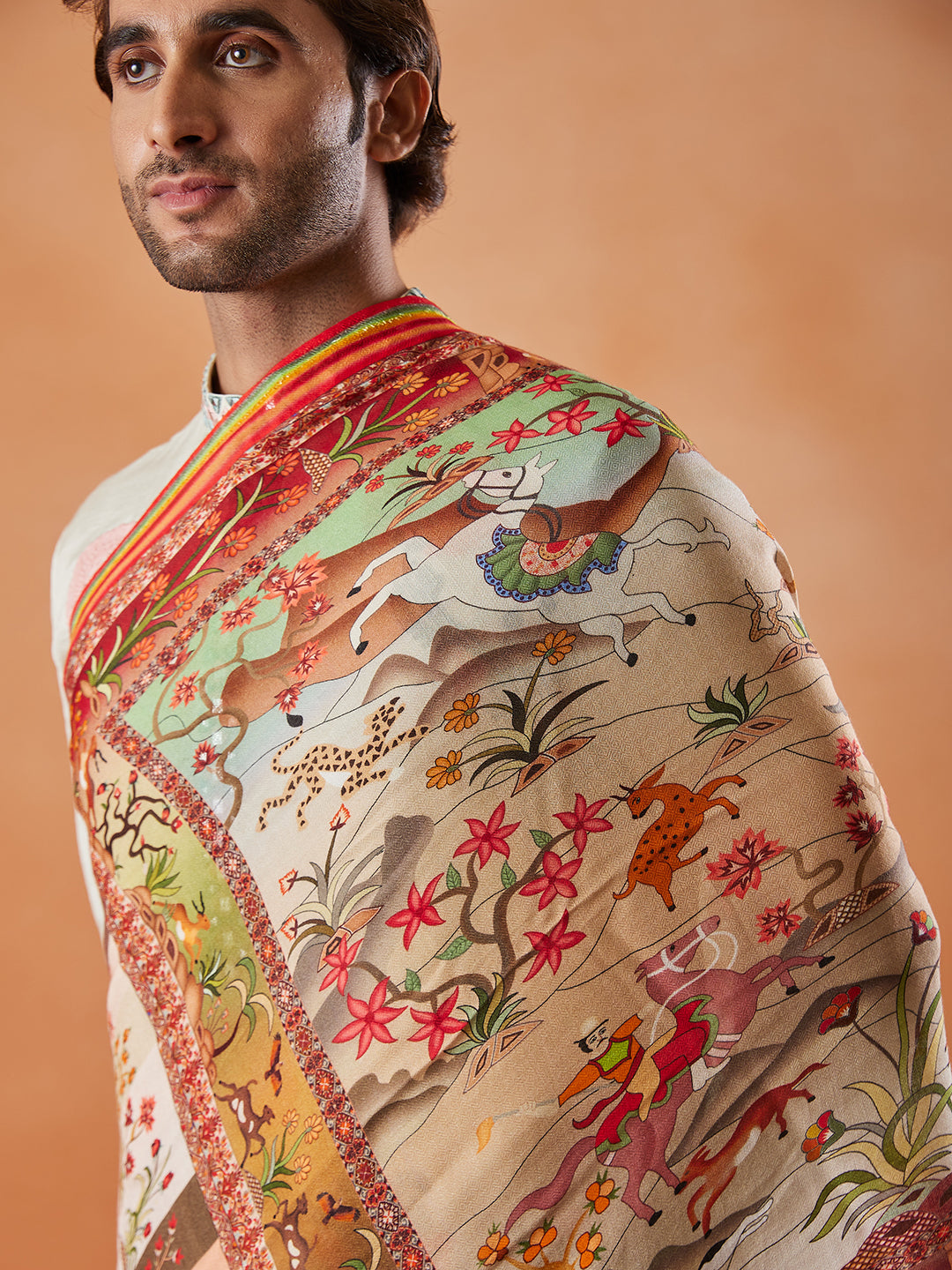
How To Identify An Original Kashmiri Pashmina Shawl
How To Identify An Original Kashmiri Pashmina Shawl
A pashmina shawl is not merely a fashion statement. It is an aspirational piece of clothing that is passed on through generations because of the cultural value it holds. A symbol of timeless elegance and a testament to India’s rich artistry, Pashmina can easily be called a prized possession for someone who owns it.
Pashmina shawls are usually associated with wealth and elite women. So, a genuine question that arises for us is: how do we identify a pure pashmina shawl? What makes it stand apart is the softness and warmth it holds. It gives you a feeling of soft luxury with its touch. It originates from the fine fibres of the Capra hircus (Changthangi) goat's underbelly, having deep roots in Kashmiri craftsmanship.
They gained popularity during the Mughal rule in India as they were worn by nobles and royalty alike. When dowry was practiced in southeast Asian nations like India and Nepal, Pashmina was considered an heirloom that the bride used to take along with her as dowry as they were considered too expensive to buy. They became an instant hit in the European nations because they were not just soft and warm, but they complimented the French gowns well, making these shawls a rage and a status symbol in France, worn by French royalty.

The unique properties of pashmina lie in the feel of the fabric. It is not incredibly delicate and soft, but it is also thin and lightly weighed. They are softer than cashmere and even silk fabric. They are also known for their immense warmth. It is weaved in such a manner that it traps air between the fabric, making it an effective insulator that gives warmth to the body even during extreme cold. You can try burning a small thread or the corner of a thread from a pashmina shawl. Since it is made from original hair, it will have a very ashy fragrance as compared to a synthetic fragrance.
What makes Pashmina shawls expensive is the crafting. It involves meticulous artistic flare and an acute attention to detail. The entire process is executed by skilled artisans who possess in-depth knowledge of weaving and embroidery techniques. From the initial combing and sorting of the wool to the subsequent stages of spinning, dyeing, and weaving, each phase demands precision and a high level of expertise.
Embroidery emerged as a pivotal element in the realm of Pashmina shawls, with elaborate designs often gracing the borders and body of these elegant garments. The intricate embroidery is meticulously executed by hand, utilising delicate needles and silk or metallic threads, thus adding an additional layer of beauty and complexity to the shawl. These exquisite embellishments stand as a testament to the unwavering dedication and artistic prowess of the craftsmen, rendering each Pashmina shawl an unparalleled masterpiece.
Authenticating a Pashmina requires an eye for detail. First comes the touch and feel of the fabric, which is soft, warm, and very smooth. As they originate from Kashmiri and Persian cultures, they usually contain 'kani' style weaving, which is true to the region. They are also woven intricately through needlework, which adds to their beauty.
When you are supposed to buy pashmina shawls, always keep in mind the colour authenticity of the shawl. They will have consistent colours as they are only made using natural dyes. If there is an unevenness in the colours of the shawl, you can identify that it is a synthetically created piece. Keep an eye out for subtle and rich colours that are mostly indicative of the natural dyeing process used in Pashmina shawls.
Do not forget to examine the label for details about the material, origin, and manufacturer. Authentic pashminas often include information about the craftsmanship. Look for certifications from reputable organisations or governing bodies that verify the authenticity of the Pashmina. The most common certification is the ‘GI mark', which is an indication of the fact that the shawl has been manufactured by local artisans in Kashmir using traditional handlooms and is of the highest quality pashmina.
As explained earlier, Pashminas have achieved heirloom status in our nation. Hence, the price is on the higher end of the spectrum. However, a genuine Pashmina offers longevity of use and a long shelf life. Excessively low prices may be a sub-standard, cheaper version of the shawl, making it less authentic. It gets its value from the time consumed in doing such intricate handcraft, expensive techniques, and the quality of the material.
To avoid fraud and scams, it is advised to choose reputable sellers with a history of selling authentic Pashmina products. It is always a boon to read reviews and customer testimonials. Reputable sellers often provide authenticity guarantees or certificates with their products.
To care for your cherished pashmina and preserve its beauty for years to come, handling it with clean hands is a primary necessity. You need to store it folded in a cool, dry place, as hanging a pashmina is often not advisable. Also, avoid using harsh chemicals and detergents, and opt for professional dry cleaning.
In essence, Pashmina is more than fabric; it is a cherished emblem of our non-perishable heritage. From the Mughal era to gracing French royalty, its journey is a testament to our cultural diversity and its immense allure. Crafted with awe-inspiring skill and authenticated through its softness, intricate weaving, and natural colours, each Pashmina is a masterpiece






